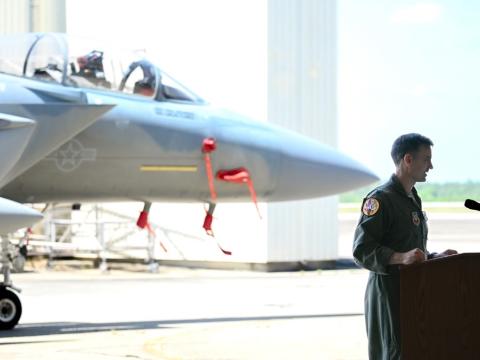Air Force IT Modernization Aims to Streamline, Speed Up Operations
The U.S. Air Force’s IT modernization efforts are focusing on speeding up access to data across the service’s enterprise network.
The U.S. Air Force’s recent IT modernization efforts are focusing on speeding up access to data across the service’s enterprise network by removing redundant and often contradictory devices and procedures to improve warfighter’s user experiences and speed operations.
Achieving this goal is the culmination of years of networking initiatives and data migration projects that transformed the way the service managed its IT operations, Douglas Dudley, director of Air Force programs for Akima LLC, told Robert K. Ackerman, SIGNAL Magazine’s editor in chief during a SIGNAL Media Executive Video interview.
In its current form, the Air Force’s enterprise must deal with thousands of requests for services such as help desk tickets and manage major initiatives such as cybersecurity and cloud migration programs. Dudley said there are three key components to how the service manages these requirements: governance, configuration management and a customer focus.
Governance is important to Air Force IT operations because it determines what can and can’t be done on the network and who has access to certain types of data. But this comes with a challenge because the service must make sure “that it’s not governance solely for the sake of having governance,” Dudley said.
The service was experiencing latency issues caused by large numbers of devices such as firewalls between the user’s device and the cloud. There could be up to 47 devices/firewalls between a user and accessing information on the cloud, Dudley said. The Air Force wanted to change this, but most of those devices were there because of policy decisions. He noted that it took years to change those policies to cut the number of devices and improve user response times, mainly through a program called Operation Flamethrower that developed an expedited process to identify and eliminate outdated, restrictive and unnecessary policies and guidance.
Configuration management also goes hand in hand with governance, Dudley said.
This is an area the Air Force has had trouble with partly because there are currently too many people authorized to make changes on the network coupled with a need to know who is making those changes and who is authorized to do it. Akima is involved in a servicewide effort that reduced more than 200 duplicative services and models down to 49 universally relevant models and workflows.
Finally, customer focus can help serve as a check to governance and configuration management when they become too stringent in their requirements, Dudley explained.
“Too often we in the IT community tend to measure what we think is important to us, not the customer,” he said. While metrics like ticket closures are important, if the process proves too cumbersome for warfighters to use, then it soon won’t be mission critical as they find workarounds, he explained.




